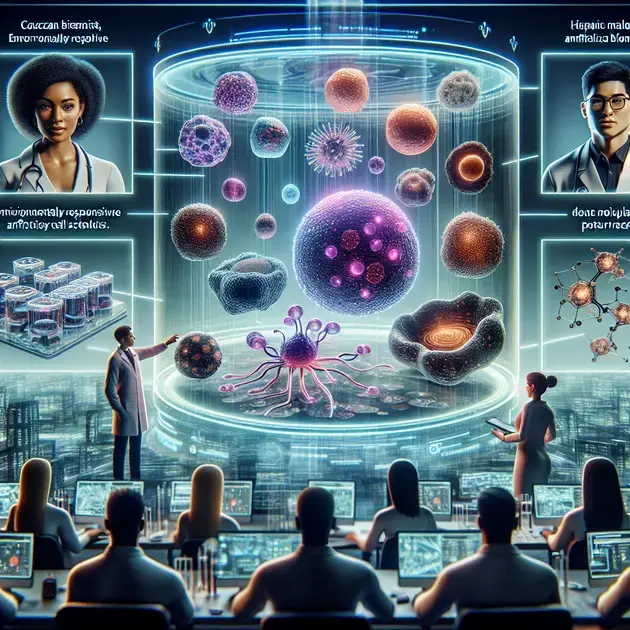Title: Revolutionary Advances in Artificial Cell Synthesis and Cell-Cell Communication
Introduction:
In a groundbreaking development, a renowned research team has achieved a significant milestone by successfully
creating environmentally responsive cells engineered with artificial organelles. With an innovative approach
inspired by the photoreceptors found in human eyes, these proto-cells have also demonstrated the ability to
imitate natural cell-cell communication. The implications of this milestone are vast, offering numerous prospects
for fundamental research and medical applications.
Article:
Scientific advancements have always sought to imitate and understand the intricacies of nature. One such remarkable
achievement has been the synthesis of simple cells that possess environmental sensitivity and artificial organelles.
By using advanced bioengineering techniques, a research team has made great strides in this domain.
The team aimed to replicate the natural processes observed in cells, particularly those found in the human eye. The
photoreceptors in the eye are capable of detecting light and transmitting signals to the brain, enabling crucial visual
functions. Inspired by this model, the researchers successfully emulated natural cell-cell communication in their
synthetic cells.
This breakthrough is significant for both basic scientific exploration and medical applications. By replicating
cell-cell communication akin to the intricate systems found in living organisms, researchers can gain valuable insights
into how cells interact and respond to their environment. Such knowledge can revolutionize the field of medicine,
offering new avenues for targeted drug delivery, cell signaling, and tissue regeneration.
The creation of environmentally sensitive synthetic cells with artificial organelles marks a major milestone in
bioengineering. Environmental sensitivity allows these cells to respond to changes in their surroundings, potentially
leading to advanced pollution detection systems or environmental biosensors. These cells could play a pivotal role in
environmental monitoring and remediation efforts, offering a more comprehensive understanding of ecological health.
Moreover, the ability to integrate artificial organelles into synthetic cells brings forth an array of possibilities.
Organelles are specialized structures within cells that perform specific functions, and by engineering artificial
versions, scientists can delve deeper into understanding cellular mechanisms and their role in diseases. This
breakthrough could pave the way for innovative drug delivery systems that target specific organelles within cells,
leading to more effective treatments for a myriad of diseases.
In conclusion, the successful synthesis of environmentally responsive cells with artificial organelles, coupled with
the emulation of natural cell-cell communication, represents a leap forward in scientific exploration. The
possibilities offered by these findings are immense, ranging from better understanding cell behavior in various
environments to enhanced medical applications. With further research, these advancements have the potential to
transform our understanding of cellular biology and provide groundbreaking solutions in medicine and environmental
sciences.
A team of researchers has achieved a breakthrough in creating uncomplicated, environmentally responsive cells equipped
with artificial organelles. In a groundbreaking achievement, the team has further managed to simulate natural
cell-to-cell communication using these proto-cells, taking inspiration from the photoreceptors found in the human
eye. This development presents exciting new avenues for both fundamental scientific exploration and potential medical
applications.
